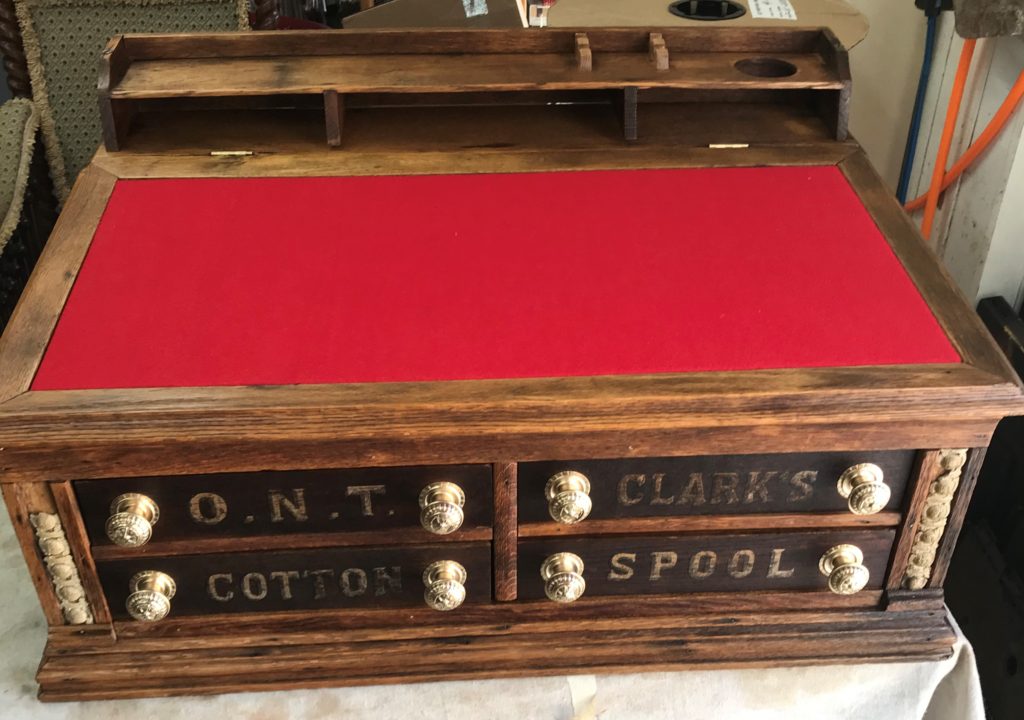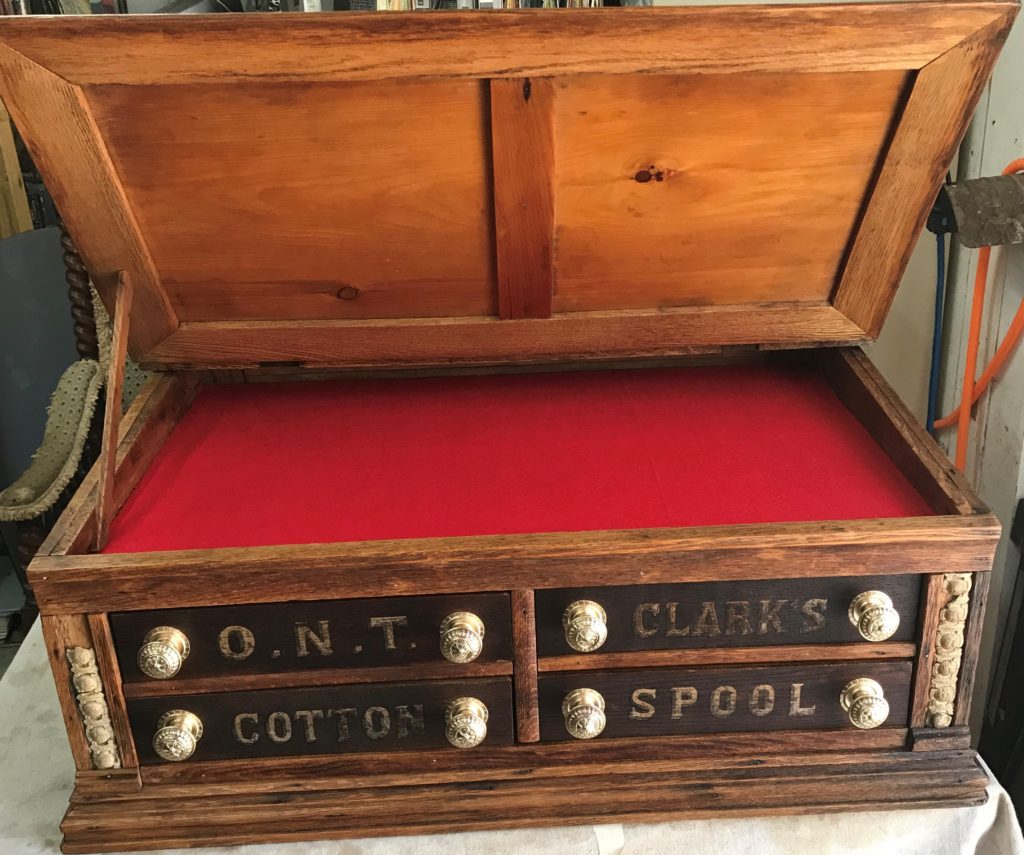Have you heard the saying “the shoemaker’s children go barefoot?” Sometimes it’s “the cobbler’s children have no shoes.” That’s how I sometimes feel with regard to antiques. Bob and Cecil stay busy repairing, refinishing, reupholstering, and caning—but always other people’s pieces. However, as an early Mother’s Day present, my antique spool cabinet, which had been awaiting attention for years, was restored!
Spool cabinets such as this were typically used in dry goods stores in the late 1800’s. While Clark’s was founded in Paisley, Scotland by brothers James and Patrick in the 1750’s, it was the Napoleonic Wars (1803-1815) and a French blockade on the export of silk to Britain that led to their development of cotton thread in 1812. The Clark company sent agents to the US in the 1840’s, but didn’t establish their first factory here until 1863. In 1879, the American branch of the Clark empire became known as Clark & Company.
Clark’s threads were among those recommended for use with domestic sewing machines, which grew in popularity after the Civil War. In the 1880’s, the Clark company developed a six-cord, soft-finished thread called “Our New Thread”, which became known as O.N.T. Since there was a merger with J.P. Coats and 14 other thread companies in 1899, it’s likely that my piece is from the 1880’s or 1890’s.
Over the next 15 years, there was pricefixing and fierce competition, leading the US government to file suit in 1913, alleging restraint of trade in violation of the Sherman Antitrust Act. By 1914 the ownership structure was changed. At its peak the company employed 3000 workers. After other mergers in the 20th century, since 2015, the company has been called the Coats Group; they are still making Coats & Clark threads today. Maybe I should buy some to store in my cabinet!
Lynne & Bob McCann



